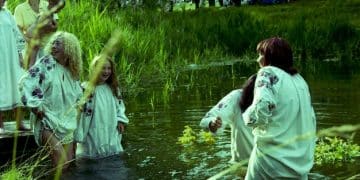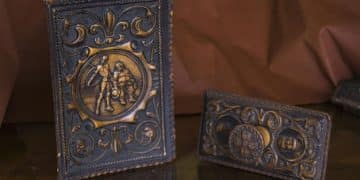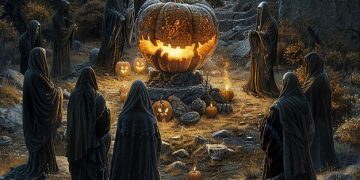The Malleus Maleficarum: A 2025 Examination of the Witch Hunter’s Handbook

The Malleus Maleficarum: A Critical Examination of the Witch Hunter’s Handbook in 2025 explores the historical and cultural impact of this infamous text, examining its relevance and interpretations in the modern era.
The Malleus Maleficarum: A Critical Examination of the Witch Hunter’s Handbook in 2025 requires a deep dive into a text that has shaped perceptions of witchcraft for centuries. This book, infamous for its role in the witch hunts of the Renaissance, continues to provoke debate and scrutiny.
What can we learn from re-examining this historical document today? Let’s explore the dark legacy and enduring influence of the Malleus Maleficarum.
Unveiling the Malleus Maleficarum: A Historical Overview
The Malleus Maleficarum, often translated as “The Hammer of Witches,” is a treatise on witchcraft compiled in 1486 by Heinrich Kramer and Jacob Sprenger, two German clergymen. Its publication marked a turning point in the perception and prosecution of witchcraft in Europe.
Authorship and Context
Heinrich Kramer, also known as Henricus Institoris, was a Dominican inquisitor. Jacob Sprenger was also a Dominican theologian and served as a professor at the University of Cologne, but the extent of his contribution to the Malleus is debated. Understanding their backgrounds and the prevailing societal anxieties of the late 15th century is crucial to grasping the book’s intent and impact. The book was written in response to what Kramer and Sprenger perceived as a rise in witchcraft and heresy, fueled by societal anxieties and superstitions of the time.
Key Themes and Arguments
The Malleus Maleficarum is divided into three parts, each addressing different aspects of witchcraft: firstly, it denies those who deny witchcraft; secondly, it speaks of the reality and practices of witchcraft; finally, it advises judges on how to prosecute witches. The book argues that women are particularly susceptible to witchcraft due to their supposed moral and intellectual weakness.
- The inherent weakness of women makes them vulnerable to demonic influence.
- Witches possess the power to cause harm through spells, potions, and pacts with the devil.
- Effective prosecution of witchcraft requires rigorous interrogation, torture, and execution.
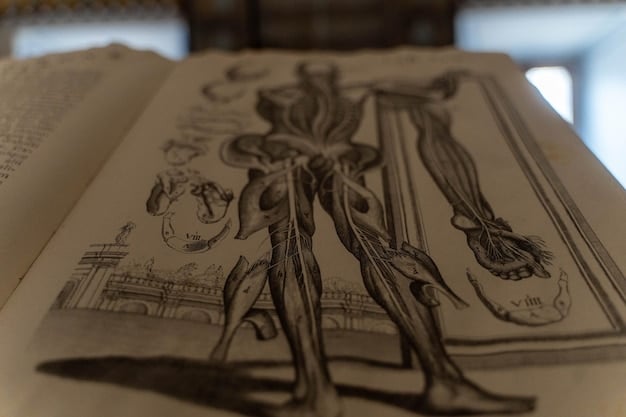
In conclusion, understanding the historical context, authorship, and key arguments of the Malleus Maleficarum is crucial for grasping its impact on the perception of witchcraft and the subsequent witch hunts in Europe. Examining The Malleus Maleficarum: A Critical Examination of the Witch Hunter’s Handbook in 2025 allows us to unpack the biases and prejudices of the past.
The Malleus Maleficarum’s Impact on Witch Hunts
The Malleus Maleficarum had a profound and devastating impact on the witch hunts that swept across Europe during the 16th and 17th centuries. It provided a systematic framework for identifying, prosecuting, and punishing individuals accused of witchcraft.
Fueling the Witchcraft Panic
The book’s publication coincided with a period of intense social and religious upheaval in Europe. The Reformation, the rise of printing, and widespread anxieties about disease and famine created a climate of fear and suspicion. The Malleus Maleficarum provided a convenient explanation for these woes, blaming them on the machinations of witches.
Justification for Persecution
The Malleus’s detailed descriptions of witchcraft practices and its recommendations for interrogation and punishment provided legal and theological justification for the persecution of suspected witches. Courts throughout Europe used the book as a guide for conducting trials and sentencing defendants. The text served as a manual for witch hunters, guiding their methods of identifying, interrogating, and ultimately executing those accused of witchcraft. The Malleus Maleficarum: A Critical Examination of the Witch Hunter’s Handbook in 2025 has led to serious questions being asked about the legacy of this text.
The Role of Gender
The Malleus Maleficarum’s emphasis on the supposed weakness and wickedness of women played a significant role in the disproportionate targeting of women during the witch hunts. The book argued that women were more susceptible to demonic influence due to their inherent moral and intellectual inferiority, leading to widespread accusations and persecution.
- The Malleus portrayed women as inherently deceptive and prone to evil.
- Accusations of witchcraft often targeted women who were unmarried, widowed, or otherwise marginalized.
- The persecution of women as witches served to reinforce patriarchal social structures.
In conclusion, the Malleus Maleficarum played a critical role in fueling the witch hunts by providing a framework for identifying, prosecuting, and punishing suspected witches, particularly women. Understanding its impact on this dark chapter of history is essential for preventing similar injustices in the future. Modern examinations of the text, such as The Malleus Maleficarum: A Critical Examination of the Witch Hunter’s Handbook in 2025, highlight the dangers of unchecked authority and the persecution of marginalized groups.
Modern Interpretations and Critiques
In the 21st century, the Malleus Maleficarum continues to be the subject of intense scrutiny and debate. Scholars, historians, and feminists have offered various interpretations and critiques of the book, exploring its historical context and its enduring relevance.
Feminist Perspectives
Feminist scholars have highlighted the Malleus Maleficarum’s misogynistic themes and its role in the persecution of women during the witch hunts. They argue that the book reflects and reinforces patriarchal attitudes towards women, portraying them as inherently evil and susceptible to demonic influence.
Deconstructing the Text’s Authority
Modern critics question the Malleus Maleficarum’s claims to authority and its portrayal of witchcraft as a real and dangerous threat. They point out the book’s reliance on hearsay, superstition, and biased testimony, arguing that it lacks any basis in empirical evidence. Examining the book through a modern lens, The Malleus Maleficarum: A Critical Examination of the Witch Hunter’s Handbook in 2025 uncovers deep-seated biases and prejudices.
The Enduring Legacy of Misogyny
Despite its historical context, the Malleus Maleficarum’s misogynistic themes continue to resonate in contemporary society. Critics argue that the book’s portrayal of women as inherently evil and manipulative has contributed to ongoing discrimination and violence against women.
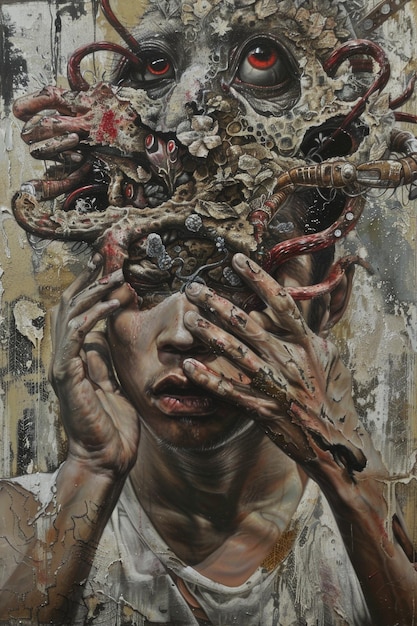
- The Malleus reflects a broader cultural fear of female power and autonomy.
- Its stereotypes of women as witches have persisted in popular culture and media.
- Examining the Malleus can help us to identify and challenge contemporary forms of misogyny.
In conclusion, modern interpretations and critiques of the Malleus Maleficarum have shed light on its misogynistic themes, its questionable claims to authority, and its enduring legacy of discrimination and violence against women. By deconstructing the book’s arguments and challenging its assumptions, we can gain a deeper understanding of the historical and cultural forces that shaped the witch hunts and continue to impact our society today. This is what The Malleus Maleficarum: A Critical Examination of the Witch Hunter’s Handbook in 2025 seeks to achieve.
The Malleus Maleficarum and Contemporary Witchcraft
Despite its origins as a tool for persecuting witches, the Malleus Maleficarum has taken on new meanings in contemporary witchcraft and neopaganism. Some practitioners view the book as a historical artifact that provides insights into the beliefs and practices of early modern witches, while others reject it as a biased and inaccurate portrayal of witchcraft.
Historical Insights
Some contemporary witches study the Malleus Maleficarum as a way to learn about the historical context of witchcraft and the beliefs of those who were persecuted during the witch hunts. They view the book as a window into a dark and complex past, helping them to understand the origins of modern witchcraft traditions.
Reclaiming the Narrative
Other practitioners reject the Malleus Maleficarum as a tool of oppression and seek to reclaim the narrative of witchcraft from its negative portrayal in the book. They emphasize the positive and empowering aspects of witchcraft, focusing on its connection to nature, spirituality, and female empowerment. This reclaiming of the narrative is a central theme in The Malleus Maleficarum: A Critical Examination of the Witch Hunter’s Handbook in 2025.
Ethical Considerations
For practitioners of witchcraft today, the Malleus Maleficarum presents complex ethical questions. How do they reconcile the book’s role in the persecution of witches with their own beliefs and practices? How do they navigate the book’s misogynistic themes and its negative portrayal of women?
The relevance of The Malleus Maleficarum: A Critical Examination of the Witch Hunter’s Handbook in 2025 to contemporary witchcraft practices is debatable. For some, it is a historical artifact to be studied and understood. For others, it is a symbol of oppression to be rejected.
Relevance of the Malleus Maleficarum in 2025
In 2025, the Malleus Maleficarum remains relevant as a cautionary tale about the dangers of intolerance, prejudice, and the abuse of power. Its legacy continues to shape our understanding of the witch hunts and the persecution of marginalized groups throughout history.
Lessons from the Past
The Malleus Maleficarum teaches us valuable lessons about the importance of critical thinking, the dangers of groupthink, and the need to protect individual rights and freedoms. By examining the book’s historical context and its impact on the witch hunts, we can learn to recognize and resist similar forms of oppression and injustice in our own time. We must ensure The Malleus Maleficarum: A Critical Examination of the Witch Hunter’s Handbook in 2025 never needs to be revisited in a similar context.
Combating Misinformation
In an age of misinformation and fake news, the Malleus Maleficarum serves as a reminder of the power of propaganda and the importance of verifying information before accepting it as truth. The book’s reliance on hearsay, superstition, and biased testimony highlights the dangers of spreading false information and the need for media literacy.
Promoting Tolerance and Understanding
By promoting tolerance and understanding, we can create a more just and equitable society for all. The Malleus Maleficarum: A Critical Examination of the Witch Hunter’s Handbook in 2025 encourages us to learn from the mistakes of the past and to work towards a future where all individuals are treated with respect and dignity.
- The Malleus offers insights into the psychology of fear and scapegoating.
- Its legacy reminds us of the importance of empathy and compassion.
- Studying the Malleus can help us to build a more inclusive and tolerant society.
In conclusion, the Malleus Maleficarum remains relevant in 2025 as a cautionary tale about the dangers of intolerance, prejudice, and the abuse of power. By learning from the mistakes of the past, we can work towards a future where all individuals are treated with respect and dignity. Critical analysis of the text helps to safeguard against repeating the errors of history.
| Key Point | Brief Description |
|---|---|
| 📜 Historical Context | Understanding the Malleus requires knowledge of its 15th-century origins. |
| 👩 Gender Bias | The book portrays women as susceptible to witchcraft, influencing witch hunts. |
| ⚖️ Modern Relevance | The Malleus serves as a reminder against intolerance and the abuse of power. |
| ✨ Witchcraft Today | Contemporary witches have varying perspectives on the Malleus. |
Frequently Asked Questions
The Malleus Maleficarum’s main aim was to systematically identify, prosecute, and eliminate those accused of witchcraft, particularly women in 15th-century Europe.
The Malleus Maleficarum was primarily written by Heinrich Kramer, with Jacob Sprenger potentially contributing, though the extent of his involvement is debated by historians.
The Malleus Maleficarum portrays women as inherently weaker, both morally and intellectually, making them more susceptible to the influence of the Devil and the practice of witchcraft.
It remains studied to understand historical perceptions of witchcraft, gender biases, and the dangers of unchecked authority, offering valuable insights into past and present societal issues.
It serves to warn against intolerance, prejudice, and power abuse, promoting critical thinking, individual rights protection, and media literacy in the face of misinformation, ensuring historical lessons are heeded.
Conclusion
Ultimately, examining The Malleus Maleficarum: A Critical Examination of the Witch Hunter’s Handbook in 2025 allows us to engage with challenging content and consider how historical events impact modern perspectives. By analyzing texts like the Malleus Maleficarum, we can promote understanding and critical thinking.
This exploration hopefully encourages further investigation into this controversial book and its impact on history and society, ultimately leading to a more enlightened understanding of the past.


